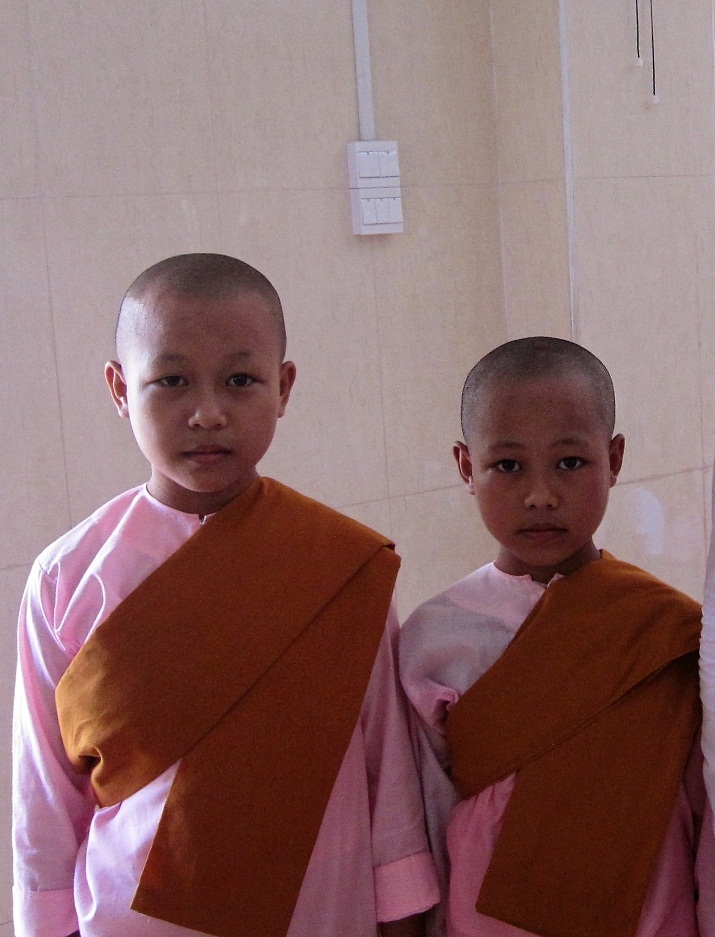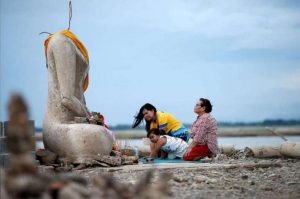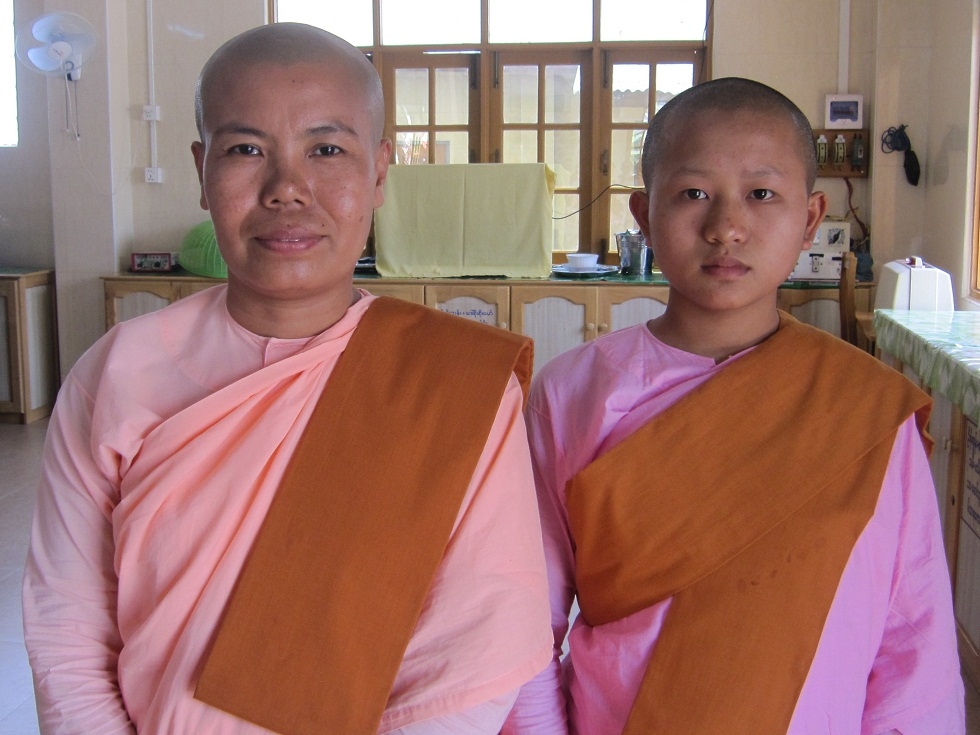
After more than 20 hours on the road, Lway Aye Aye and Nang are on the last leg of their journey—the ride across Bago River from Yangon to Thanlyin. As the bus crosses Thanlyin Bridge, Nang waves excitedly at the barges below. This is the eight-year-old’s first trip out of her village in Namkham, some 1,000 kilometers away in northern Shan State, which lies on the border with Yunnan Province in China. The strains of the journey, both physical and emotional, show on her 65-year-old grandmother’s weary face. The fears and uncertainties that have weighed heavily on her mind for the past weeks once again surge forth. What will happen when Nang’s father finds out she has taken his daughter to Thanlyin? What will happen to Nang now?
At Thadama Myintzu Nunnery in Thanlyin, head nun Daw Aye Theingi is expecting them and has prepared tea and food. As they rest in the office, the quiet is suddenly disrupted by sounds of laughter and chatter. Soon, the courtyard is flushed with pink: the other nuns are returning from morning school.
In a week or so Nang will join them, trading her ponytail and colorful Palaung costume for a pink robe and a neat shave. Daw assures Lway Aye Aye that her granddaughter will not feel lost. More than 70 per cent of the 200 nuns living here are from Shan State, most of them brought to the nunnery by their relatives or parents.
“In northern Shan State, living conditions are extremely difficult because of poverty and the continuous fighting between ethnic minorities and the Burmese Army,” explains Daw. “For families with many children, there is often not enough food for all, not to mention education. With widespread unrest and corruption, human trafficking is rampant in the border towns. Girls are especially vulnerable, and are at high risk of being raped or exploited by human traffickers.”
According to statistics released by Myanmar’s anti-human trafficking task force, the human trafficking rate is highest in the northern states bordering China and Thailand. From January to August 2015, of the 82 recorded cases of human trafficking throughout Myanmar, 10 cases were from Kachin State and 25 from Shan State, China and Thailand being the main destinations. These include cases of forced marriage, forced labor, prostitution, child trafficking, and child adoption.* Even more tragic is that girls are sometimes sold to the traffickers by their parents themselves.
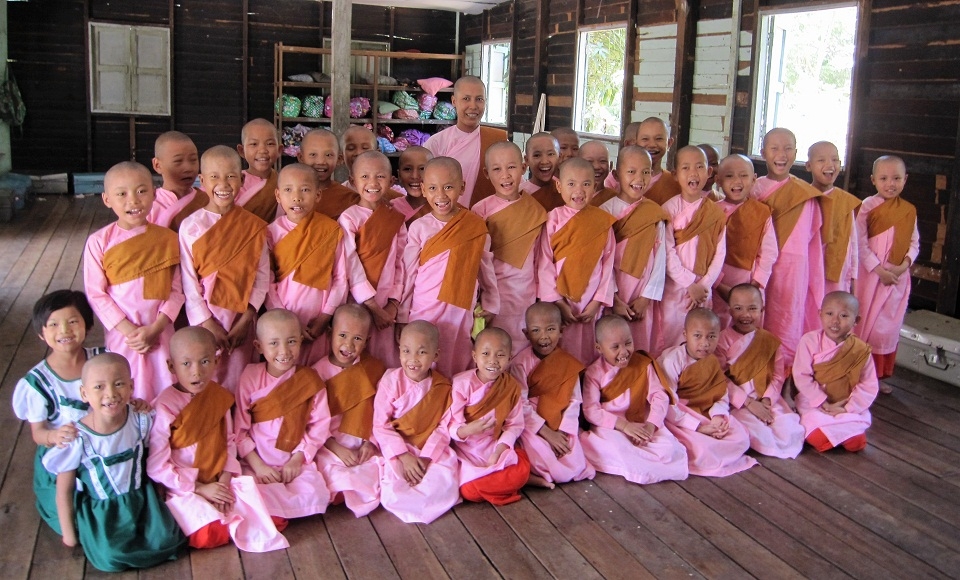
Fear of trafficking was the reason Lway Aye Aye took Nang away from her home. With Nang’s addicted and abusive father, she was concerned for her granddaughter’s safety. A year earlier, Nang’s mother had left for China to try to find work to support the family, but after three months, she was never heard from again. Nang’s brothers, aged 18 and 14, are addicted to opium, and her father raped her 15-year-old sister and then sold her to drug dealers to pay off his gambling debt. In Namkham Nang could be sexually assaulted and abused, and perhaps even sold across the Chinese border as a bride or end up in a Thai brothel, where virgin girls are in high demand. Having no one to turn to, Nang’s grandmother decided a nunnery would be the safest refuge for Nang.
Myanmar is a traditional society, where patriarchy still dominates at many levels. Thadama Myintzu Nunnery and the thousands of other nunneries across the country form an important social safety net for these endangered girls. They do not just provide shelter and food, but empower them with education, and skills so that they can lead a better life.
Head nun Daw understands the limitations faced by these girls from poor families. As a child growing up in Taungoo she yearned for the life of a nun, and asked to be ordained at the tender age of ten. Her life as a nun was difficult, however, with little financial or material support, and few opportunities for education; after graduating from high school as a nun, she had nowhere to go to further her studies. At the age of 21, she finally came to Yangon to pursue the Dhammacariya (Master of Dharma) Examinations, which would allow her to start a school for nuns.
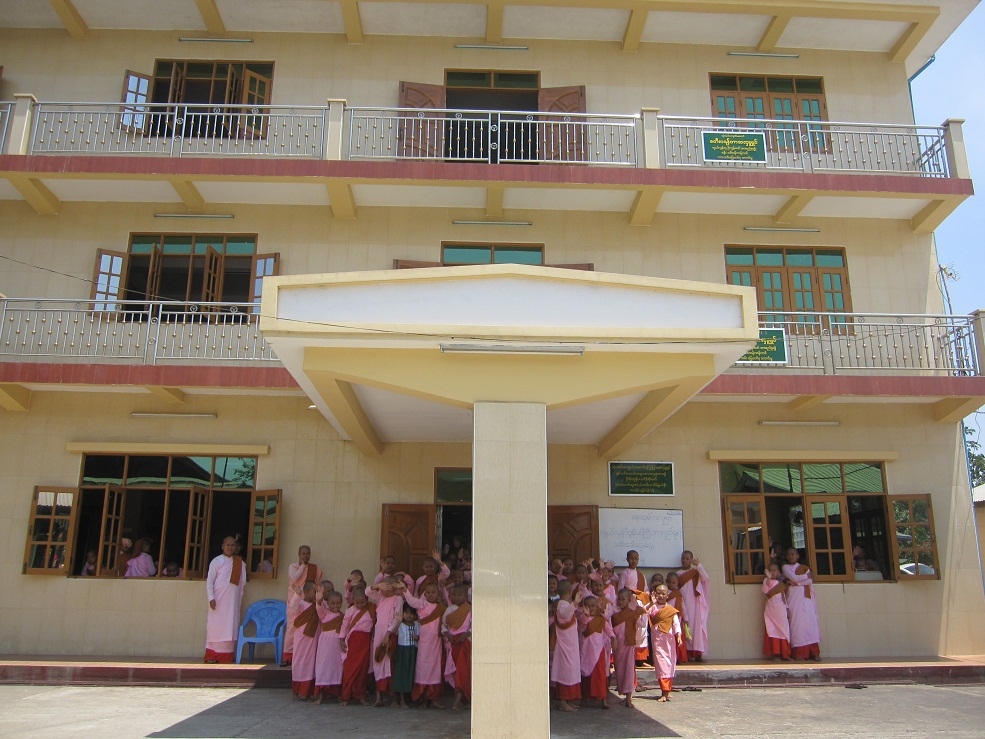
At first, she lived in a small nunnery by Bago River, where one girl was from Shan State. As others in her village asked the girl about her life in the nunnery, soon more and more requests to join poured in from Shan State. Daw Aye Theingi and another nun, Daw Kinsana Theingi, decided to set up a more suitable place for the girls, and scraped together their savings to buy the present plot of land. Thus in 2011 Thadama Myintzu Nunnery was established—with one wooden block, no proper kitchen, water supply, or showers, and toilets made only of flimsy bamboo.
Despite the difficulties, the two head nuns remain determined to provide a decent place for the girls, to educate them, and to share the Buddha’s teachings. Through their hard work and discipline, the nuns have gradually gained a good reputation among the local community, and with it, more support. Through a generous donation they have just completed a new three-story building, which can accommodate all of the nuns. It also features a shrine hall, a proper kitchen, a proper dining area, and proper toilets, the office, and running water from a deep well. The better living conditions have also led to better health and hygiene. Today the nunnery is thriving, with over 200 nuns aged 5 to 29.
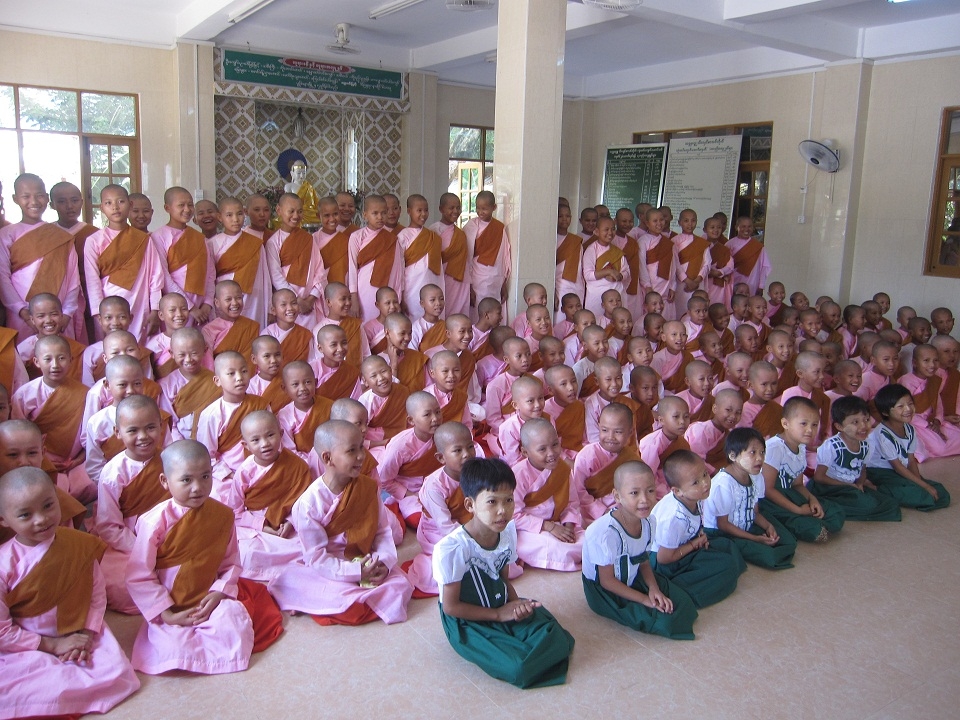
The nuns are up and about before the first light of dawn. After their morning chanting and breakfast, they clean the nunnery and then head off to school, with most going to the monastic Bone Pyan School nearby. Whereas the monks go on an alms round every day, the young nuns collect alms only once a week, which contributes to their schooling, food, accommodation, and daily needs. With the donations they receive, the two head nuns manage to put together the US$200 a year required to send each of the girls to school.
Once the girls start living at the nunnery, most do not go home again. Parents rarely visit because of the difficult journey, and many do not see their parents for years. “Now it is better,” says Daw, pointing to a new telephone in the office. “Parents can call to find out how their daughters are doing.”
At first Daw was worried, as the girls from Shan State spoke only their local language and did not understand Burmese. But most adapted quickly, and settled into the nunnery well. “I want to be educated so I can become a teacher,” says 11-year-old Ma Kay Lar Thi, whose favorite subject is history. Her 12-year-old sister Ma Hay Mar Thi aspires to join the police. Ma Sandar Thiri, 15, who has been here since the start, wants to be a company manager so that she can help Daw support the girls. Asked if they ever feel homesick, the girls all reply that they are happy at the nunnery and do not want to go back to their village.
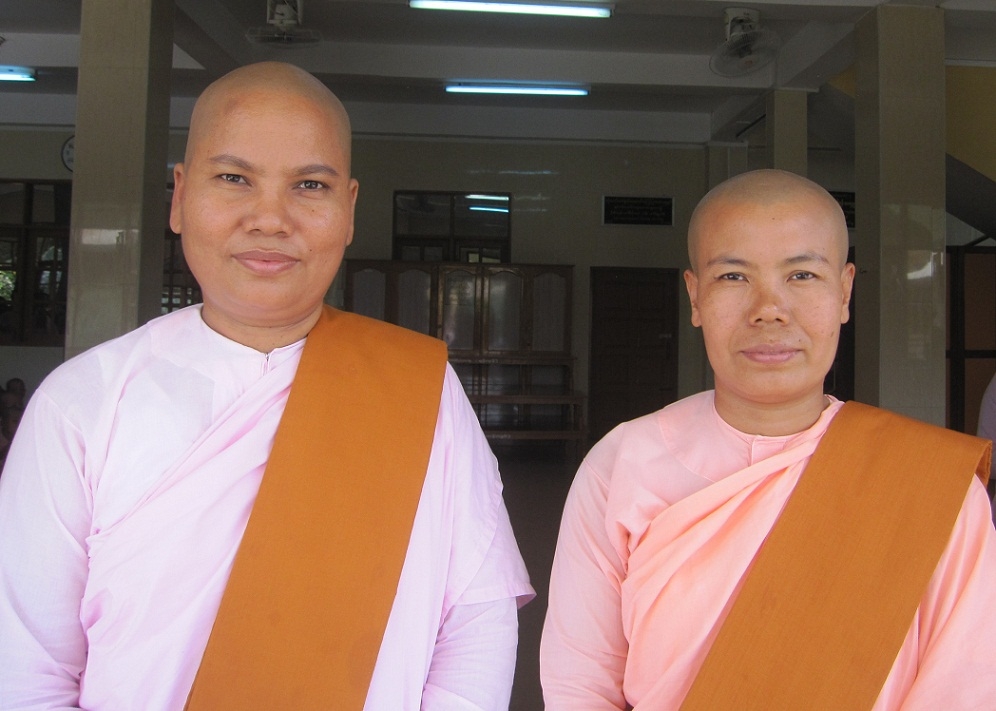
When they reach 18, the girls can decide if they want to stay or if they prefer to move to the city. Not all will remain nuns for the rest of their lives. Some will return to lay life, marry, and raise their own families—having received refuge, an education, and a caring upbringing. “Whatever their decision, I hope that they can lead useful and happy lives,” says Daw with a gentle smile. “Through our work, we hope we can become agents of change in a new Myanmar, and earn a rightful place in society for nuns.”
*http://elevenmyanmar.com/local/human-trafficking-rate-rises-shan-state-border-areas
See more
Poverty drives Myanmar girls into underage sex work (Reuters)
All photos are by the author.


